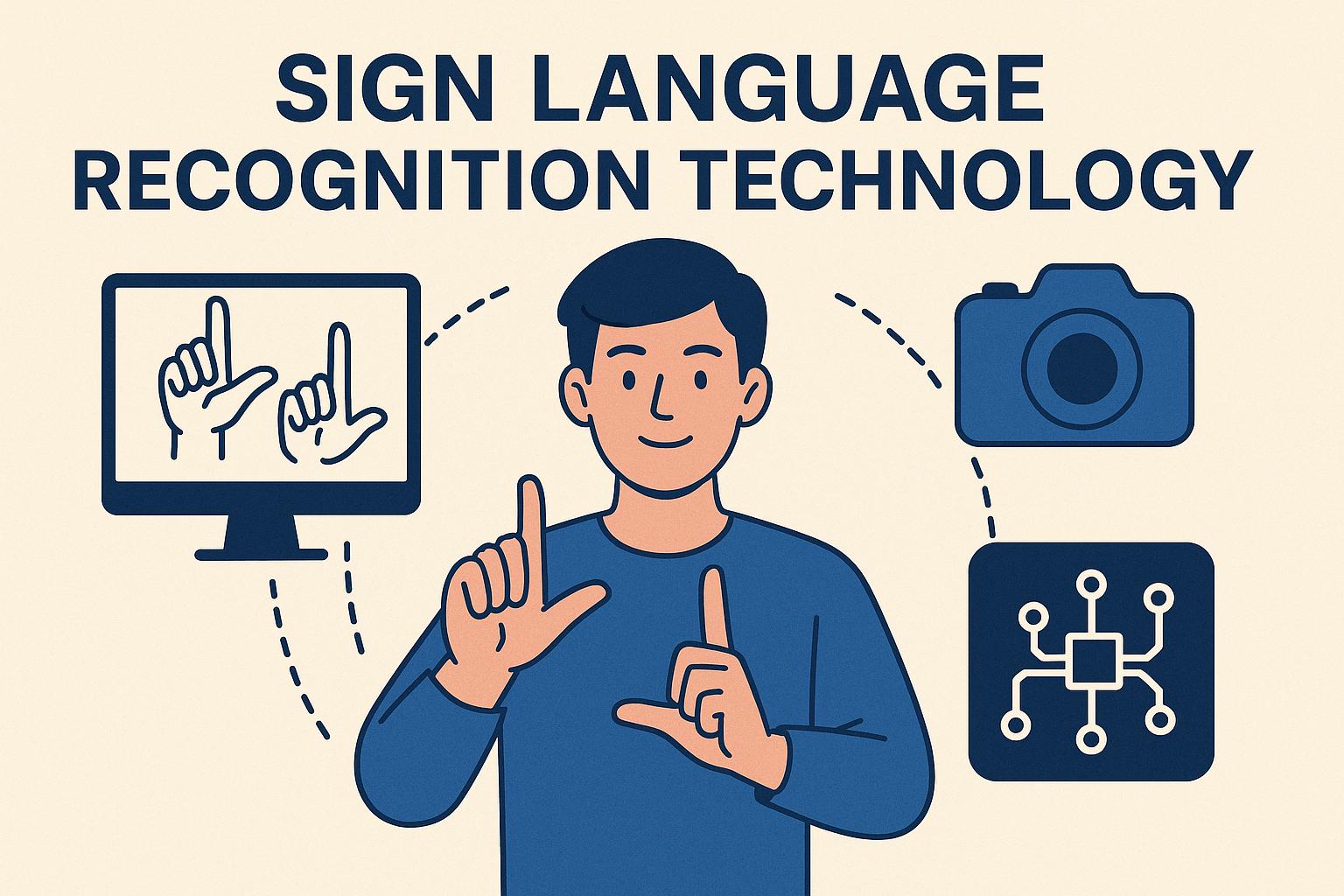Introduction to Sign Language Recognition Technology
Sign Language Recognition (SLR) technology is transforming the way we communicate with individuals who are deaf or hard of hearing. Leveraging advancements in computer vision, machine learning, and natural language processing, this technology aims to provide seamless interaction by accurately interpreting sign language into spoken or written language.
Understanding the Need for SLR Technology
Sign languages are an essential mode of communication for many people, particularly those who are deaf or hard of hearing. These languages are not universal; different regions have distinct sign languages, much like spoken languages. For instance, American Sign Language (ASL) and British Sign Language (BSL) have different signs and syntax, even though both are used in primarily English-speaking countries. Therefore, just like linguistic diversity exists in spoken languages, it is present in sign languages as well.
SLR technology addresses the communication barriers faced by the deaf community, enabling broader accessibility and inclusion in everyday life. By translating signs into text or speech, individuals who do not know sign language can communicate more effectively with those who use it as their primary mode of communication. This technology aims to reduce the communication gap between hearing and non-hearing individuals, allowing for more inclusive interactions in personal, educational, and professional settings.
Key Components of SLR Systems
SLR systems are built on a foundation of several fundamental components that work in conjunction to translate sign language into spoken or written language. These components include:
Data Capture: The initial step of any SLR system involves capturing the sign language gestures. This is typically accomplished through video cameras or wearable sensors. Cameras are favored for their non-intrusiveness and ability to capture a wide range of gesture nuances. In contrast, gloves and other sensor-based devices can provide more precise data regarding finger and hand articulation, but they may be less comfortable to wear and more expensive to deploy widely.
Feature Extraction: Once the data is captured, the system extracts important features from the visual input. This involves analyzing hand movements, facial expressions, and body postures. Key features that are extracted include hand shape, orientation, movement trajectory, and speed, as well as facial cues and body language, all of which are critical for distinguishing different signs. This process is akin to identifying phonemes or tonal patterns in spoken language recognition.
Recognition and Interpretation: After feature extraction comes the recognition and interpretation phase. Here, machine learning models—primarily deep learning algorithms—are employed to classify and interpret the features into meaningful language components. Convolutional Neural Networks (CNNs) and Recurrent Neural Networks (RNNs) are typically utilized for their ability to deal with spatial and sequential characteristics of sign language.
Challenges in Developing SLR Technology
While significant progress has been made in SLR technology, several challenges remain:
Variability in signing: Sign languages are as diverse and variable as spoken languages, with different people often signing the same word in different ways. Differences may be influenced by age, regional dialects, cultural nuances, and personal style. Machine learning models need to be robust enough to recognize these variations and still accurately interpret the meaning.
Continuous Signing: Unlike textual data, which has clear separations (such as spaces between words), sign language occurs in a continuous stream with fluid transitions between signs. This poses challenges in segmenting individual signs for interpretation, as the boundary can be subtle and context-specific.
Limited Datasets: Successful machine learning heavily depends on the availability of extensive datasets for training. Currently, publicly available datasets for different sign languages are limited, which hampers the development of accurate and comprehensive SLR systems. More collaboration is needed across governments, educational institutions, and private entities to create larger, more diverse datasets.
SLR Technology: Current Applications and Future Prospects
Currently, SLR technology finds applications across various sectors, enhancing communication and accessibility. This includes educational tools that support sign language learning or translation, customer service support that integrates sign language interpretation, and healthcare services inclusive of sign language users.
Video conferencing platforms are also exploring the use of SLR to provide real-time captioning and translation services. This helps in making virtual communication more accessible to sign language users, thus promoting more inclusive virtual environments.
Looking ahead, the future of SLR technology appears bright, with active research and development aimed at improving system accuracy and expanding language support. Among potential developments is the integration of SLR with augmented reality systems, which could offer real-time, dynamic translations of sign language in everyday environments. Developments are also focusing on enhancements for mobile accessibility, aiming to deliver convenient and affordable sign language translation support on handheld devices.
Moreover, initiatives are underway to broaden the scope of sign language translation to more languages, addressing the linguistic diversity within the global deaf community. This direction promises a future where individuals, irrespective of their language, can engage in direct and meaningful communication.
As technological and research advancements continue, the impact of Sign Language Recognition technology is likely to grow, providing meaningful improvements in accessibility for the global deaf community. For those interested in understanding how SLR technology continues to evolve, exploring detailed research and publications from pioneering technology institutes or companies in this field is recommended.
Overall, Sign Language Recognition technology holds vast potential to bridge communication divides and foster a more inclusive society. With ongoing advancements in this field, we are witnessing a commitment to breaking down communication barriers and improving accessibility for everyone, nurturing a more connected world.
